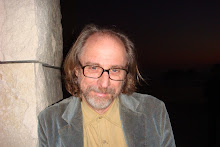My last blog entry mentioned the three tenets of a “successful” Buddhist practice: great faith, great doubt and great perseverance of effort. I wrote about great faith, and how it applies to the everyday lives of those working with children with autism. Both faith and perseverance are relatively self-evident ingredients. Great doubt is perhaps the least self-evident and yet equally important.
In the Buddhist tradition doubt is required in order to challenge and eventually overcome the tendency to “understand” something superficially. So many concepts can be grasped at so many different levels, and the more superficial our understanding the less likely we are to succeed.
In autism, parents are exceptionally vulnerable to the unproven, snake oil treatments that are marketed their way endlessly. Whether it is the promise of secretin infusions, chelating heavy metals, megavitamin treatments, or the more subtle hopes of sensory integration, play therapy, or other unproven methods, parents are lured to do things for their children that range from the directly harmful to the indirectly dangerous misappropriation of valuable time, money and energy that could be spent on things that actually do help. In these situations, it is great doubt that steers parents towards making the right decisions.
As therapists and supervisors, we too can be lured in by so-called treatment advances that have little or no research evidence, but that can tempt us to divert our valuable time and energy from proven, effective methods. Great doubt is the gift of skepticism that leads us to greater prudence in choosing our treatment methodologies and skillfully adapting them to the needs of the individual child.
Great doubt as our companion makes professionals better students. It leads us to always question authority, to refuse to take someone’s word that one action is better than another, to refrain from sycophantism, and to let intellectual honesty and scientific rigor underpin our efforts to help.
Some see faith as the absence of doubt and doubt as the absence of faith. In the Buddhist tradition the two co-exist; they do not negate each other but can occupy the same space. Sensei Sevan Ross, director of the Chicago Zen Center has described faith and doubt as “two ends of a spiritual walking stick.” We grip the ‘faith’ end and poke ahead with the ‘doubt’ end. It is our determination (Great Perseverence, which I will discuss in my next blog entry) that allows us to pick up the stick and to continue on our journey.
It is the acknowledgement of doubt that makes faith in Buddhism mean something different than faith as religion. It is more a ‘practice’ than a religion or ideology. Likewise, dealing with autism should be a practice that we engage in on a day to day basis, not a religion where we become sure that we have found a certain method that becomes the one right path. We need faith to deal with our fear. But healthy doubt can accompany faith. In our mindful daily practice, we as professionals should work together with parents and children in such a way that neither rote approaches nor the belief in the certainty of our methods should limit us.
Subscribe to:
Post Comments (Atom)

No comments:
Post a Comment